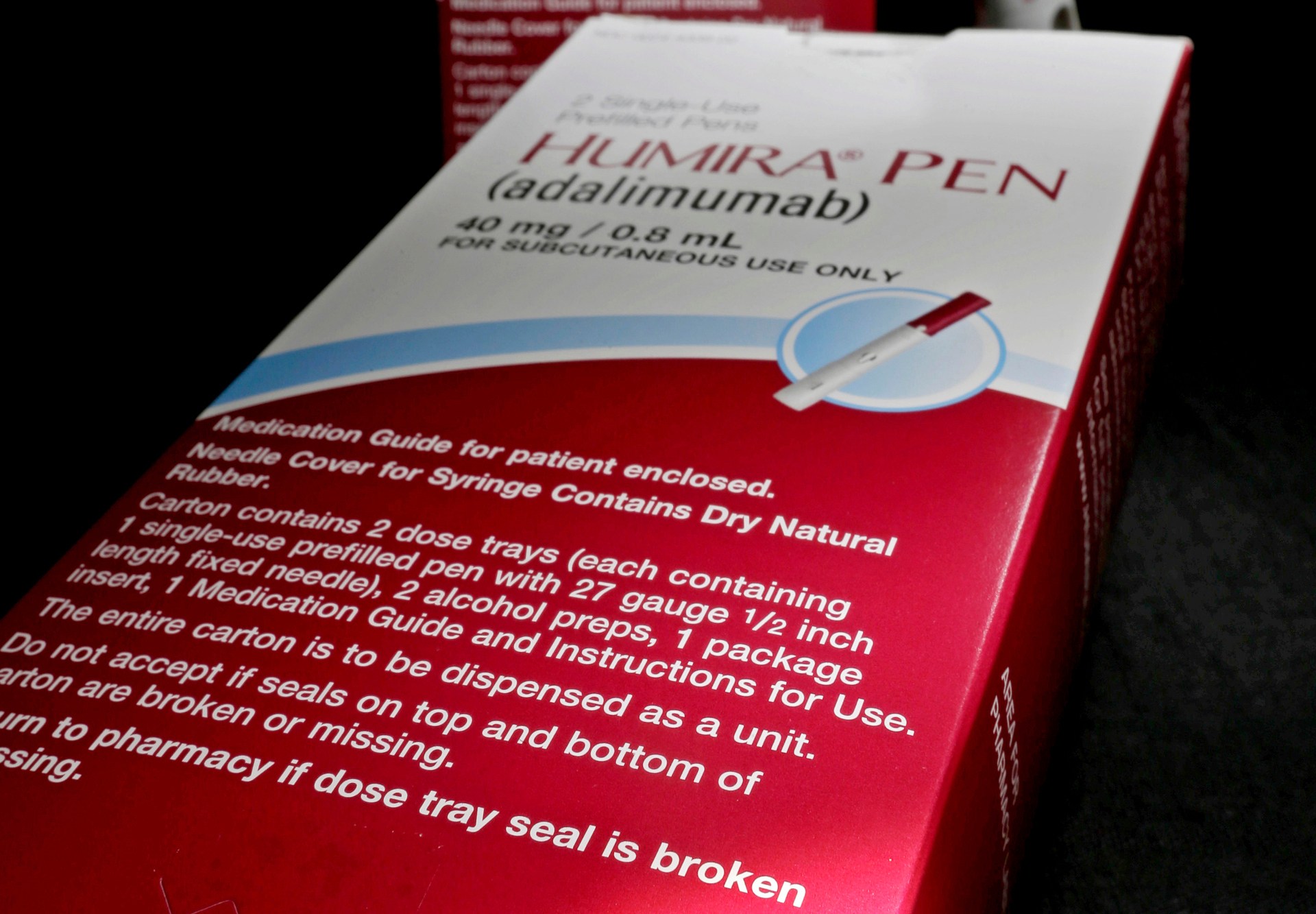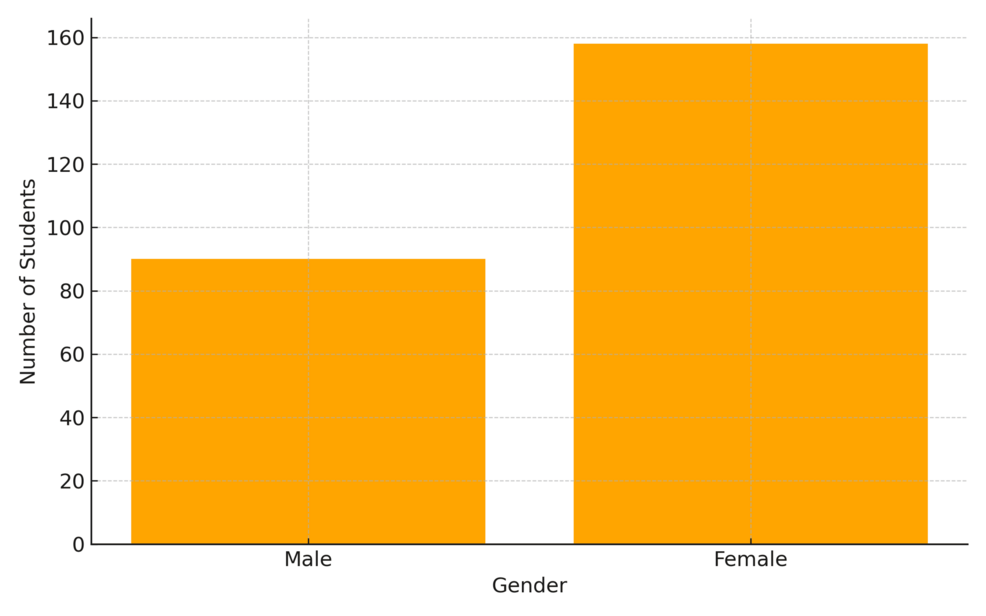Several therapeutic advances have reshaped the treatment landscape in small cell lung cancer (SCLC) over the past year, signaling a long-anticipated shift away from historically stagnant standards of care (SOC) and toward a more dynamic, targeted paradigm, according to Charles M. Rudin, MD, PhD, who added that the future of drug development for this disease has never been brighter.1
In a presentation delivered during the 20th Annual New York Lung Cancers Symposium®, Rudin highlighted how new drug classes, such as antibody-drug conjugates (ADCs) and T-cell engagers, and cell surface–directed strategies are driving this evolution, demonstrating efficacy that would have been difficult to envision a decade ago.
“2025 has been a real banner year for SCLC research, with some promising data emerging,” Rudin, who is a thoracic medical oncologist at Memorial Sloan Kettering Cancer Center in New York, stated. “ADCs have the potential to displace platinum/etoposide in the first-line setting… [which] we’ve been giving for decades together with immune checkpoint blockade…and given the data [we’ve seen] with tarlatamab [Imdelltra], a T-cell engager can be added here, potentially changing the first-line SOC.”
Rudin also serves as deputy director of the Cancer Center, co-director of the Druckenmiller Center for Lung Cancer Research, and the Sylvia Hassenfeld Chair in Lung Cancer Research.
Rudin Spotlights Key Advances in the Small Cell Lung Cancer
- SCLC treatment is rapidly evolving, with ADCs and T-cell engagers delivering efficacy once thought unattainable and signaling a shift away from long-standing standards.
- Tarlatamab is emerging as a new standard, demonstrating strong survival benefits in second-line ES-SCLC and promising activity in frontline maintenance combinations.
- Next-generation ADCs like I-DXd and ABBV-706 show high response rates, positioning them as potential future challengers to platinum/etoposide in the first-line setting.
How Has Checkpoint Inhibition Changed the SOC in SCLC?
Checkpoint inhibitors have now become embedded in the management of extensive-stage SCLC (ES-SCLC), but their impact is complex, Rudin explained. In limited-stage SCLC, durvalumab (Imfinzi) has recently shifted a decades-long paradigm dominated by concurrent platinum-based chemoradiotherapy alone.
Data from the phase 3 ADRIATIC trial (NCT03703297), which supported the December 2024 FDA approval of durvalumab in LS-SCLC, showed a statistically significant improvement in overall survival (OS) with durvalumab (n = 264) vs placebo (n = 266), at a median of 55.9 months (95% CI, 37.3-not reached [NR]) and 33.4 months (95% CI, 25.5-39.9), respectively (HR, 0.73; 95% CI, 0.57-0.93; P = .0104).2 The median progression-free survival (PFS) was similarly improved with durvalumab (HR, 0.76; 95% CI, 0.61-0.95; P = .0161).
“On the one hand, we do see real, long-term, transformative benefit [with checkpoint inhibitors] in a small subset of patients,” Rudin said about this “yin and yang” of immune checkpoint blockade in SCLC.1 “We have patients with metastatic SCLC who are cured with immunotherapy. That is good for those patients, but it leaves out [approximately] 85% of the patients who [derive] no benefit from the addition of immune checkpoint blockade.”
Ultimately, checkpoint blockade has changed the SOC in SCLC, but only for a minority of patients, underscoring the need for additional strategies to broaden the benefit of immunotherapy, Rubin asserted.
Could Adding Chemotherapy to Maintenance Immunotherapy Improve Outcomes?
One emerging strategy for bolstering immunotherapy responses in SCLC is to intensify the maintenance phase by layering cytotoxic agents onto PD-L1 inhibition. The phase 3 IMforte trial (NCT05091567) explored the addition of lurbinectedin (Zepzelca) to atezolizumab (Tecentriq) vs atezolizumab alone as maintenance therapy in ES-SCLC after induction therapy.3
Primary results presented at the 2025 ASCO Annual Meeting showed that the combination (n = 242) significantly improved PFS vs atezolizumab alone (n = 241; HR, 0.54; 95% CI, 0.43-0.67; 2-sided P < .0001). The median PFS by independent review facility assessment was 5.4 months (95% CI, 4.2-5.8) with lurbinectedin plus atezolizumab vs 2.1 months (95% CI, 1.6-2.7) with atezolizumab monotherapy. The 12-month PFS rates were 20.5% vs 12.0%, respectively. Furthermore, the median OS was 13.2 months (95% CI, 11.9-16.4) with the combination vs 10.6 months (95% CI, 9.5-12.2) with atezolizumab alone (HR, 0.73; 95% CI, 0.57-0.95; 2-sided P = .0174). The 12-month OS rates were 56.3% vs 44.1%, respectively.
“This is a win. It’s a good drug and it works,” Rudin said. “However, I’m not sure this is as practice changing as I would like. One criticism that has been raised about this study is that only a minority of these patients on the control arm ever [received] lurbinectedin.”
Rubin also pointed out the clinical trade-off of introducing a cytotoxic agent at a time when patients might otherwise enjoy a chemotherapy break. In his view, a key goal of maintenance strategies should be to prolong survival outcomes, and he did not see compelling evidence from IMforte that the tail of the Kaplan-Meier curve was substantially altered.
“We need more follow-up from this trial, and we still need to work on better maintenance strategies.”
How Are T-Cell Engagers Reshaping Second-Line and Maintenance Therapy?
T-cell engagers represent one of the most promising new modalities in SCLC, particularly because they bypass some of the limitations of antigen presentation that constrain checkpoint blockade, Rubin explained. Tarlatamab (Imdelltra) is currently “the hot drug in this field,” although several other T-cell engagers are demonstrating comparable activity.
Tarlatamab in the Second-Line Setting
Rudin pointed to pivotal data from the phase 3 DeLLphi-304 trial (NCT05740566), which compared tarlatamab with chemotherapy in patients with previously treated ES-SCLC. Data published in the New England Journal of Medicine and presented at the 2025 ESMO Congress showed that the median OS was 13.6 months (95% CI, 11.1-NR) with tarlatamab (n = 254) vs 8.3 months (95% CI, 7.0-10.2) with chemotherapy (n = 255; HR, 0.60; 95% CI, 0.47-0.77; P < .001).5 In those with platinum-resistant disease, defined as a chemotherapy-free interval (CFI) of less than 90 days, the median OS with tarlatamab was 10.9 months vs 6.4 months with chemotherapy (HR, 0.60; 95% CI, 0.43-0.84).6 In those with platinum-sensitive disease, defined as a CFI of 90 days or longer, the median OS in the tarlatamab and chemotherapy arms was 17.1 months and 10.6 months, respectively (HR, 0.65; 95% CI, 0.45-0.93).
Importantly, prior exposure to PD-L1 blockade did not appear to negatively affect benefit with tarlatamab. In patients who had received prior anti–PD-L1 agents, the median OS was 14.1 months with tarlatamab vs 8.3 months with chemotherapy (HR, 0.61; 95% CI, 0.45-0.82). In those without prior anti–PD-L1 therapy, median OS was 13.6 vs 8.3 months, respectively (HR, 0.65; 95% CI, 0.42-1.03).
“I would argue that this is, for most patients, the new SOC in this country,” Rudin said, adding that the magnitude and consistency of benefit make tarlatamab compelling in the second line.
Tarlatamab in Frontline Maintenance Therapy
Rudin also highlighted emerging data signaling the potential efficacy of tarlatamab as part of frontline maintenance regimens. Extended follow-up from the phase 1b DeLLphi-303 trial (NCT05361395), presented at the International Association for the Study of Lung Cancer (IASLC) 2025 World Conference on Lung Cancer and published in Lancet Oncology, showed that tarlatamab plus anti–PD-L1 therapy (n = 88) led to a median OS of 25.3 months (95% CI, 20.3-not evaluable [NE]) and a median PFS of 5.6 months (95% CI, 3.5-9.0).7 The disease control rate (DCR) was 60% and the median duration of disease control was 14.6 months (95% CI, 7.2-18.4). The objective response rate (ORR) was 24% and comprised 2 complete responses and 19 partial responses; the median duration of response (DOR) was 16.6 months (95% CI, 7.1-NE).
Additional cohort data from DeLLphi-303 presented at the 2025 ESMO Congress explored tarlatamab in combination with frontline chemoimmunotherapy (n = 96) in ES-SCLC.8 At a median follow-up of 13.8 months (95% CI, 12.5-15.0), the ORR was 71% (95% CI, 61%-80%), with a complete response (CR) rate of 5% and a partial response rate of 66%; 11% of patients had stable disease, 8% had progressive disease, and responses were not evaluable in 9%. The median DOR was 11.0 months (95% CI, 8.5-NE), the DCR was 82% (95% CI, 73%-89%), and the median duration of disease control was 10.7 months (95% CI, 7.7-18.8).
“These are really striking results,” Rudin remarked. “We have not seen these sorts of survival curves for patients with recurrent SCLC. Even in the maintenance setting, you could argue the start of these curves should be lower… but this looks really good. [These are] early data, but this is a 96-patient trial—that is not to be [discounted].”
Could ADCs Eventually Displace Platinum/Etoposide in the First-Line Setting?
ADCs are another major component of what Rudin described as a new wave of drug development in SCLC, specifically targeting cell surface proteins rather than driver oncogenes. He focused on 2 agents that he believes may ultimately challenge platinum/etoposide in the frontline setting: the B7-H3–directed ADC ifinatamab deruxtecan (I-DXd) and a seizure-related homolog protein 6 (SEZ6)–targeting ADC ABBV-706.1
Ifinatamab Deruxtecan
In the phase 2 IDeate-Lung01 trial (NCT05280470), patients who received I-DXd at the 12-mg/kg dose (n = 137) achieved a confirmed ORR of 48.2% (95% CI, 39.6%-56.9%), which included a 2.2% CR rate. The DCR was 87.6% (95% CI, 80.9%-92.6%).9
The median PFS was 4.9 months (95% CI, 4.2-5.5), with 3-, 6-, and 9-month PFS rates of 68.0% (95% CI, 59.4%-75.2%), 35.3% (95% CI, 27.3%-43.4%), and 19.3% (95% CI, 12.9%-26.5%), respectively. The median OS was 10.3 months (95% CI, 9.1-13.3), and the 3-, 6-, and 9-month OS rates were 89.1% (95% CI, 82.5%-93.2%), 77.4% (95% CI, 69.4%-83.5%), and 59.1% (95% CI, 50.4%-66.8%), respectively.
In August 2025, ifinatamab deruxtecan was granted breakthrough therapy designation from the FDA for patients with ES-SCLC whose disease progressed on or after platinum-based chemotherapy.10
“We have not seen this sort of activity for a cytotoxic in SCLC in a long time,” Rudin commented. “This is delivering the cytotoxic to the tumor, and we are seeing response rates in the second-line setting of over 50%.”
ABBV-706
Updated data from the dose-optimization portion of a phase 1 trial (NCT05599984), presented at the IASLC 2025 World Conference on Lung Cancer, showed that ABBV-706 induced a confirmed ORR (cORR) of 58% in the total population (n = 80).11
Responses were observed across key clinical subgroups, including patients with platinum-refractory or -resistant disease and those with brain metastases. Among patients who had received 2 prior lines of therapy (n = 30) or at least 3 prior lines (n = 50), the confirmed ORRs (cORR) were 77% and 46%, respectively. For patients with a CFI of at least 90 days (n = 30), less than 90 days (n = 41), and less than 30 days (n = 19), cORRs were 57%, 59%, and 53%, respectively. Among patients with (n = 28) and without (n = 36) brain metastases at baseline, cORRs were 57% and 69%, respectively. Notably, SEZ6 expression levels were similar between responders and nonresponders.
“These are also nice-looking data, with a large majority of patients benefiting,” Rudin added. “[Both of these ADCs] have [produced] high response rates and have the potential to displace platinum-etoposide as a first-line therapy. We will see if that happens.”
What Do All These Agents Have in Common?
Across checkpoint inhibitors, T-cell engagers, and ADCs, Rudin pointed to a unifying theme: All the most promising agents in SCLC are targeting the cell surface rather than oncogenic drivers.1 “This is a very different strategy than what we have seen for, say, lung adenocarcinoma, where we made such progress by defining driver mutations and specifically subsetting disease and going after these driver mutations one by one,” he explained. “That does not work in SCLC.”
SCLC is characterized by loss of key tumor suppressor genes rather than discrete kinase drivers, making traditional targeted approaches unsuccessful. Accordingly, unconventional targets such as LSD1and EZH2, as well as a range of cell surface proteins, are now under investigation.
“It is a different, orthogonal strategy, but it is one that is increasingly exciting for this disease,” Rudin concluded.
Looking ahead, Rudin envisions a treatment paradigm in which frontline chemoimmunotherapy is followed by more effective maintenance combinations, second-line T-cell engagers become new standards, and ADCs like I-DXd and ABBV-706 potentially move into the first-line setting, transforming what has been one of the most therapeutically constrained areas in lung cancer.
References
- Rudin CN. New drugs for small cell lung cancer. Presented at: 20th Annual New York Lung Cancers Symposium; November 15, 2025; New York, New York. Accessed November 15, 2025.
- FDA approves durvalumab for limited-stage small cell lung cancer. News Release. December 4, 2024. Accessed November 15, 2025. https://www.fda.gov/drugs/resources-information-approved-drugs/fda-approves-durvalumab-limited-stage-small-cell-lung-cancer
- Paz-Ares L, Borghaei H, Liu SV, et al. Lurbinectedin (lurbi) + atezolizumab (atezo) as first-line (1L) maintenance treatment (tx) in patients (pts) with extensive-stage small cell lung cancer (ES-SCLC): primary results of the phase 3 IMforte trial. J Clin Oncol. 2025;43(suppl 16):8006. doi:10.1200/JCO.2025.43.16_suppl.8006
- Rudin C, Mountzios G, Sun L, et al. Tarlatamab versus chemotherapy (CTx) as second-line (2L) treatment for small cell lung cancer (SCLC): primary analysis of Ph3 DeLLphi-304. J Clin Oncol. 2025;43(suppl 17):LBA8008. doi:10.1200/JCO.2025.43.17_suppl.LBA8008
- Mountzios G, Sun L, Cho BC, et al. Tarlatamab in small-cell lung cancer after platinum-based chemotherapy. N Engl J Med. Published online June 2, 2025. doi:10.1056/NEJMoa2502099
- Rocha P, Sun L, Cho BC, et al. Tarlatamab as second-line (2L) treatment for small cell lung cancer (SCLC): Outcomes by chemotherapy-free interval (CFI) and prior PD-(L)1 inhibitor use in the phase 3 DeLLphi-304 trial. Presented at: 2025 ESMO Congress; October 17-21, 2025; Berlin, Germany. Abstract LBA101.
- Paulson KG, Lau SCM, Ahn M-J, et al. Safety and survival update of tarlatamab and anti-PD-L1 as first-line maintenance after chemo-immunotherapy for extensive-stage small cell lung cancer: DeLLphi-303 ph1b trial. Presented at: International Association for the Study of Lung Cancer 2025 World Conference on Lung Cancer; September 6-9, 2025; Barcelona, Spain. Abstract OA13.01.
- Wermke M, Lau SCM, Moskovitz M, et al. Tarlatamab with first-line chemoimmunotherapy for extensive stage small cell lung cancer (ES-SCLC): DeLLphi-303 study. Ann Oncol.2025; 36 (suppl 2):S1365: doi:10.1016/j.annonc.2025.08.3368 External Link
- Rudin CM, Johnson ML, Paz-Ares L, et al. Ifinatamab deruxtecan in patients with extensive-stage small cell lung cancer: primary analysis of the phase II IDeate-Lung01 trial. J Clin Oncol. Published online October 14, 2025. doi:10.1200/JCO-25-02142
- Ifinatamab deruxtecan granted breakthrough therapy designation by U.S. FDA for patients with pretreated extensive-stage small cell lung cancer. News release. Merck. August 18, 2025. Accessed November 15, 2025. https://www.merck.com/news/ifinatamab-deruxtecan-granted-breakthrough-therapy-designation-by-u-s-fda-for-patients-with-pretreated-extensive-stage-small-cell-lung-cancer/
- Byers LA, Cho BC, Cooper AJ, et al. Safety and efficacy of ABBV-706, a seizure-related homolog protein 6–targeting antibody-drug conjugate, in R/R SCLC. Presented at: International Association for the Study of Lung Cancer (IASLC) 2025 World Conference on Lung Cancer; September 6-9, 2025; Barcelona, Spain. Abstract OA06.04.








